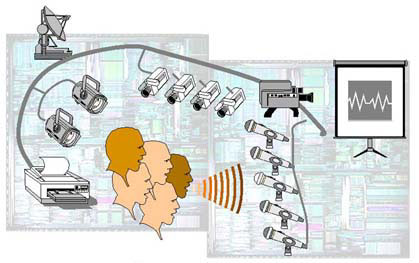





Published on Feb 14, 2025
Oxygen enables pervasive, human-centered computing through a combination of specific user and system technologies.
Oxygen's user technologies directly address human needs.
Speech and vision technologies enable us to communicate with Oxygen as if we're interacting with another person, saving much time and effort. Automation, individualized knowledge access, and collaboration technologies help us perform a wide variety of tasks that we want to do in the ways we like to do them.
Oxygen's system technologies dramatically extend our range by delivering user technologies to us at home, at work, or on the go. Computational devices, called Enviro21s (E21s), embedded in our homes, offices, and cars sense and affect our immediate environment. Hand-held devices, called Handy21s (H21s), empower us to communicate and compute no matter where we are. Dynamic networks (N21s) help our machines locate each other as well as the people, services, and resources we want to reach.
Oxygen's user technologies include:
The Oxygen technologies work together and pay attention to several important themes:
" Distribution and mobility - for people, resources, and services.
" Semantic content - what we mean, not just what we say.
" Adaptation and change - essential features of an increasingly dynamic world.
" Information personalities - the privacy, security, and form of our individual interactions with Oxygen.
Oxygen is an integrated software system that will reside in the public domain. Its development is sponsored by DARPA and the Oxygen Alliance industrial partners, who share its goal of pervasive, human-centered computing. Realizing that goal will require a great deal of creativity and innovation, which will come from researchers, students, and others who use Oxygen technologies for their daily work during the course of the project. The lessons they derive from this experience will enable Oxygen to better serve human needs
People access Oxygen through stationary devices (E21s) embedded in the environment or via portable hand-held devices (H21s). These universally accessible devices supply power for computation, communication, and perception in much the same way that wall outlets and batteries deliver power to electrical appliances. Although not customized to any particular user, they can adapt automatically or be modified explicitly to address specific user preferences. Like power outlets and batteries, these devices differ mainly in how much energy they can supply.
Embedded in offices, buildings, homes, and vehicles, E21s enable us to create situated entities, often linked to local sensors and actuators, that perform various functions on our behalf, even in our absence. For example, we can create entities and situate them to monitor and change the temperature of a room, close a garage door, or redirect email to colleagues, even when we are thousands of miles away. E21s provide large amounts of embedded computation, as well as interfaces to camera and microphone arrays, thereby enabling us to communicate naturally, using speech and gesture, in the spaces they define.
E21s provide sufficient computational power throughout the environment
• To communicate with people using natural perceptual resources, such as speech and vision,
• To support Oxygen's user technologies wherever people may be, and
• To monitor and control their environment.
E21s, as well as H21s, are universal communication and computation appliances. E21s leverage the same hardware components as the H21s so that the same software can run on both devices. E21s differ from H21s mainly in
• Their connections to the physical world,
• The computational power they provide, and
• The policies adopted by the software that runs on the devices.
E21s connect directly to a greater number and wider variety of sensors, actuators, and appliances than do H21s. These connections enable applications built with Oxygen's perceptual and user technologies to monitor and control the environment.

An E21 might control an array of microphones, which Oxygen's perceptual resources use to improve communication with speakers by filtering out background noise. Similarly, it might control an array of antennas to permit improved communication with nearby H21s that, as a result of a better signal-to-noise ratio, use less power. Multiple antennas mounted on the roof of a building, as well as incoming terrestrial lines, connect through E21s to high-bandwidth, local-area N21 networks.
Through the N21 network, an E21 can connect unobtrusively to H21s in the hands or pockets of people in an intelligent space. It can display information on an H21 display in a person's hand or on a nearby wall-mounted display; it may even suggest that the person step a few feet down the hall.
| Are you interested in this topic.Then mail to us immediately to get the full report.
email :- contactv2@gmail.com |